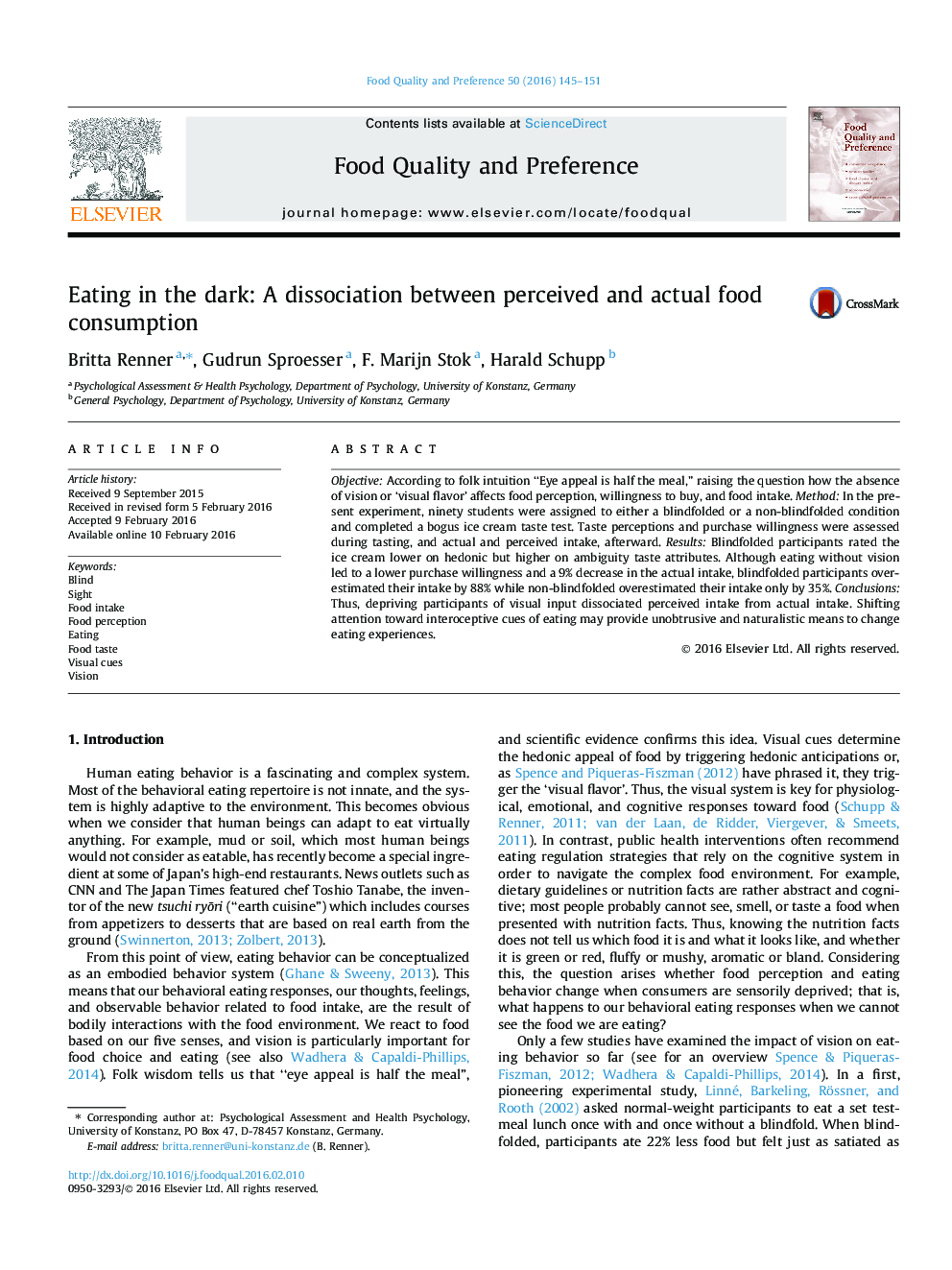| Article ID | Journal | Published Year | Pages | File Type |
|---|---|---|---|---|
| 6261124 | Food Quality and Preference | 2016 | 7 Pages |
â¢Eating in the dark led to a lower purchase willingness.â¢Visual deprivation caused a 9% decrease in the actual intake.â¢However, blindfolded participants overestimated their intake by 88%.â¢Visual deprivation dissociated perceived intake from actual intake.â¢Shifting attention toward interoceptive cues may change eating experiences.
Objective: According to folk intuition “Eye appeal is half the meal,” raising the question how the absence of vision or 'visual flavor' affects food perception, willingness to buy, and food intake. Method: In the present experiment, ninety students were assigned to either a blindfolded or a non-blindfolded condition and completed a bogus ice cream taste test. Taste perceptions and purchase willingness were assessed during tasting, and actual and perceived intake, afterward. Results: Blindfolded participants rated the ice cream lower on hedonic but higher on ambiguity taste attributes. Although eating without vision led to a lower purchase willingness and a 9% decrease in the actual intake, blindfolded participants overestimated their intake by 88% while non-blindfolded overestimated their intake only by 35%. Conclusions: Thus, depriving participants of visual input dissociated perceived intake from actual intake. Shifting attention toward interoceptive cues of eating may provide unobtrusive and naturalistic means to change eating experiences.
